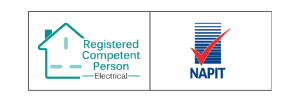We get our cars MOT’d service our boilers, and maybe even clean behind the fridge occasionally. But how often do you think about getting your home’s electrical system checked? It’s easy to forget about the wiring hidden behind your walls, but it’s crucial for safety.
So, how frequently should you have your electrics looked at by a professional? It’s a question many people ask, and the answer depends on a few things.
What Exactly is an Electrical Inspection?
It’s not just a quick peek! When a qualified electrician inspects your electrics, they carry out what’s officially called an Electrical Installation Condition Report (EICR). Think of it as an MOT for your wiring.
The electrician will test the circuits, check your consumer unit (fuse box), look at sockets, switches, and lights, and assess the overall condition of the wiring against the current safety standard, known as BS 7671 (the IET Wiring Regulations).
They’re looking for wear and tear, damage, corrosion, or anything that doesn’t meet modern safety requirements.
So, How Often Should It Happen?
Here’s the general guidance:
- Owner-Occupied Homes: The standard recommendation is to have an EICR carried out every 10 years.
- Rented Properties (Private Sector): This is where it’s legally required! Landlords must ensure their electrical installations are inspected and tested at least every 5 years, or when a new tenancy begins. This is covered by specific regulations in England, Wales, Scotland, and Northern Ireland.
- Commercial & Industrial Properties: Usually, these need inspecting more often, typically every 5 years, but this can vary greatly depending on the business type and environment.
- Special Locations: Places with increased risk like properties with swimming pools, hot tubs, or even caravan parks usually need checks more frequently, sometimes every 1 to 3 years.
Factors That Might Change Things
Even if you’re a homeowner, some things mean you might want an EICR sooner than 10 years:
- Age of the Wiring: If your home has very old wiring (like rubber or lead-insulated cables), it might need checking more often as it degrades over time and won’t meet current standards.
- Environment: Living in a damp or corrosive environment (like right by the coast) can affect your wiring.
- Usage: High-usage properties or those with frequent changes in occupants might experience more wear and tear.
- Previous Issues: If a previous EICR found problems (classified as C2 or C3 – see below), even if fixed, the electrician might recommend re-testing sooner.
- Major Work: If you’ve had significant building or electrical work done, it’s a good prompt to check the rest of the older installation.
Understanding Your EICR Report Codes
Your EICR will come with codes for any issues found:
- C1 – Danger Present: Immediate risk of electric shock or fire. Requires urgent, immediate action.
- C2 – Potentially Dangerous: Could become dangerous. Requires urgent action.
- C3 – Improvement Recommended: Not immediately dangerous, but improving it would increase safety. Action is recommended but not legally required instantly (unless you’re a landlord with C1/C2 issues, which must be fixed promptly).
- FI – Further Investigation Required: The electrician couldn’t fully assess something and needs to look closer.
Why Bother Getting an EICR?
The benefits are huge:
- Safety First: It drastically reduces the risk of electrical fires and shocks.
- Legal Must (for Landlords): It’s not optional; you must comply with the law.
- Keeps Insurers Happy: Many insurance policies require proof of regular electrical maintenance.
- Finds Problems Early: Catching a loose connection or deteriorating cable before it causes a serious fault.
- Peace of Mind: Knowing your system is safe for everyone.
Who Should Do the Inspection?
Always, always use a qualified, competent, and registered electrician for an EICR. Look for electricians registered with government-approved schemes in the UK like NICEIC, Elecsa, or STROMA. This ensures they are assessed regularly and work to the correct standards.
After the Report
If your report has C1 or C2 codes, get them fixed by a qualified electrician immediately. For landlords, this is a legal necessity within 28 days (or sooner if the report specifies). Keep your EICR report safe as a record.
Conclusion
Getting an EICR isn’t just another bit of bureaucracy; it’s a fundamental part of maintaining a safe property in the UK. Whether you’re a homeowner (recommended every 10 years) or a landlord (legally required every 5 years or change of tenancy), don’t put it off.
A regular check by a qualified electrician gives you peace of mind and, most importantly, helps protect lives and property from the hidden dangers of faulty electrics. Electrical safety is everyone’s responsibility!








